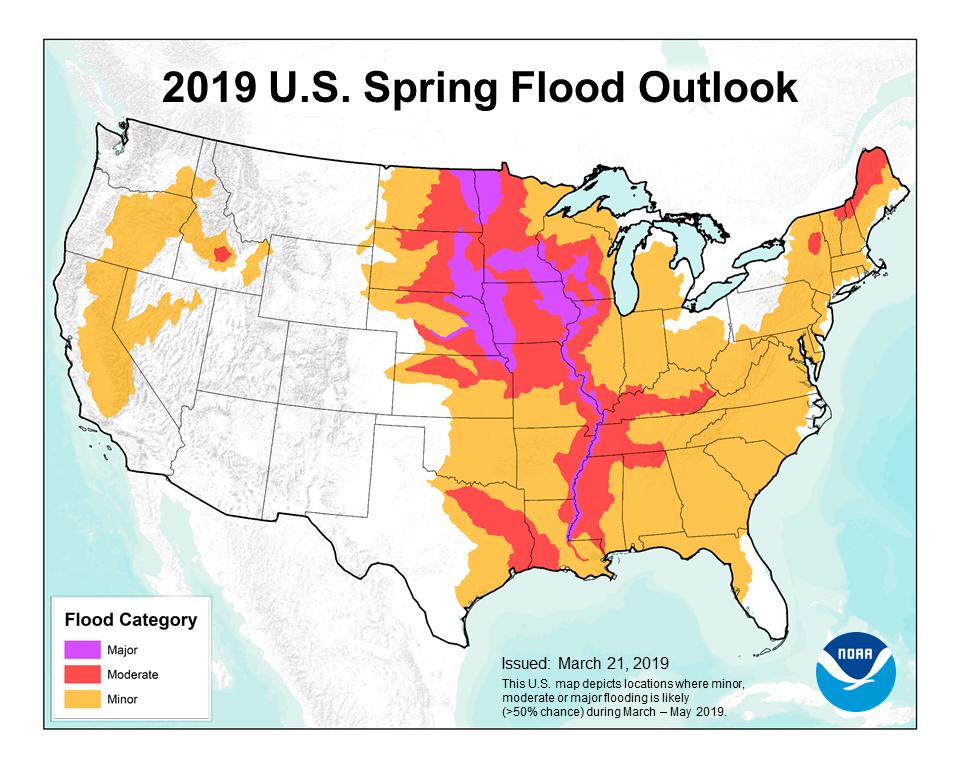Epic Midwestern flooding is likely to continue and worsen, according to the National Oceanic and Atmospheric Administration (NOAA). “Nearly two-thirds of the Lower 48 states face an elevated risk for flooding through May, with the potential for major or moderate flooding in 25 states, according to NOAA’s U.S. Spring Outlook issued today,” the agency reported in a press release (see: “Spring Outlook: Historic, widespread flooding to continue through May”). “The majority of the country is favored to experience above-average precipitation this spring, increasing the flood risk.”
“The areas of greatest risk for moderate to major flooding include the upper, middle, and lower Mississippi River basins including the mainstem Mississippi River, Red River of the North, the Great Lakes, eastern Missouri River, lower Ohio, lower Cumberland, and Tennessee River basins,” NOAA reported. “Additionally, much of the U.S. east of the Mississippi River and portions of California and Nevada are at risk for minor flooding.”
The floods have already done huge damage, reports NPR (see: “Nebraska Faces Over $1.3 Billion In Flood Losses,” by Matthew S. Schwartz). “Heavy rainfall and rapid snowmelt have caused catastrophic flooding across the Missouri River Basin, and three-fourths of Nebraska’s 93 counties have declared an emergency, Gov. Pete Ricketts said. The cost of the damage has surpassed $1.3 billion, state officials said, according to The Associated Press. That includes $449 million in damage to roads, levees and other infrastructure; $440 million in crop losses; and $400 million in cattle losses.”
The disastrous losses are partly man-made, according to Christine A. Klein, Professor of law at the University of Florida Levin College of Law (see: “Midwestern Flooding Isn’t a Natural Disaster,” by Christine A. Klein). Says Klein: “The United States has conducted a century-long, mostly failed experiment in flood control. We have straitjacketed the Mississippi and many other rivers with thousands of miles of levees in the quixotic pursuit of an unattainable goal—the floodless floodplain. But levees give a false sense of security, triggering risky floodplain development behind them.”
The floodwaters currently saturating the Upper Midwest are headed south, the Clarion-Ledger observes (see: “‘Potentially historic’ flooding threatens South, forecasters say,” by Jeff Martin/Associated Press). “Major flooding is already occurring this week on the Mississippi River near several Southern cities including Arkansas City, Arkansas; Natchez, Mississippi; and Baton Rouge, Louisiana, according to river gauges and data from NOAA.”
